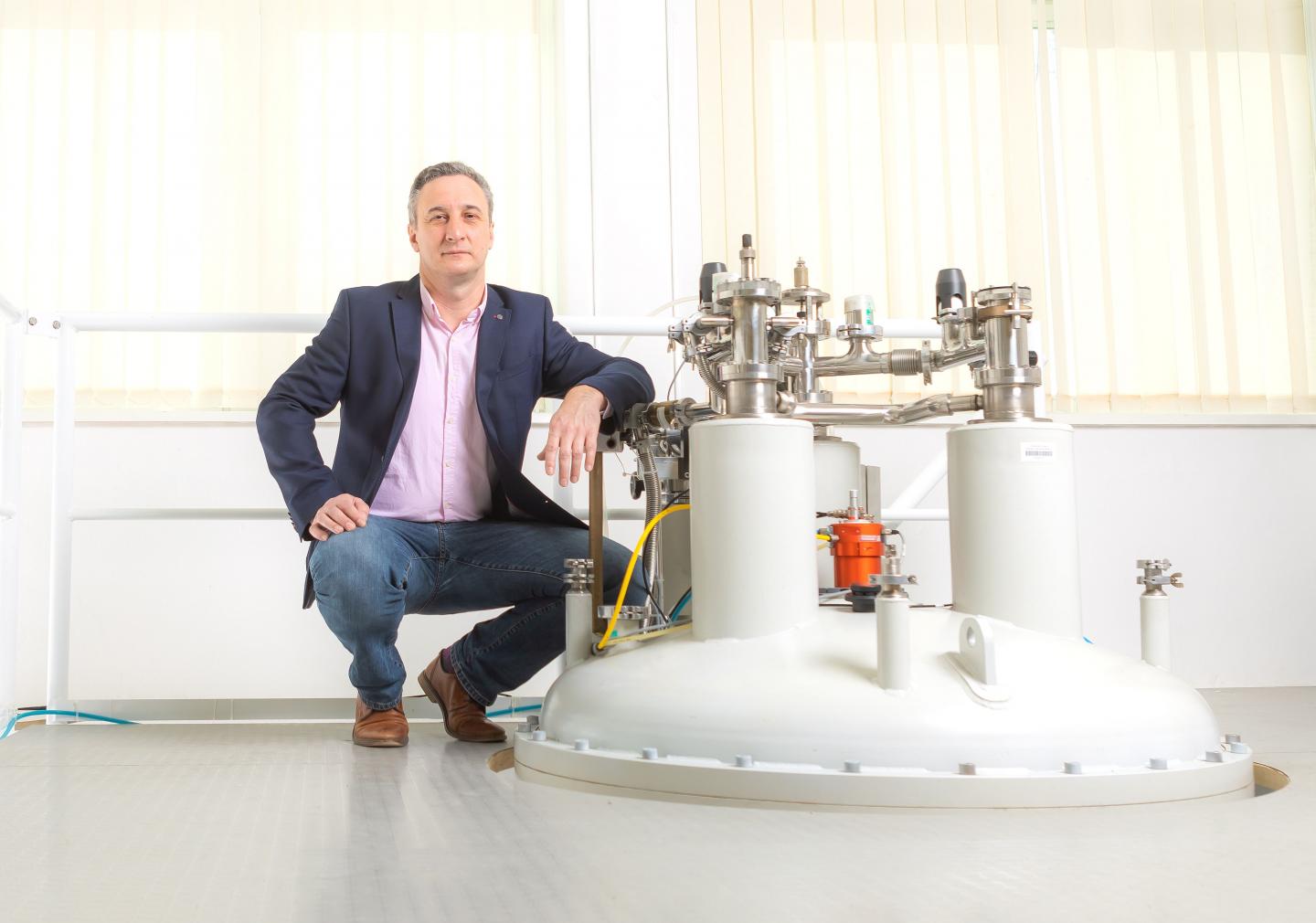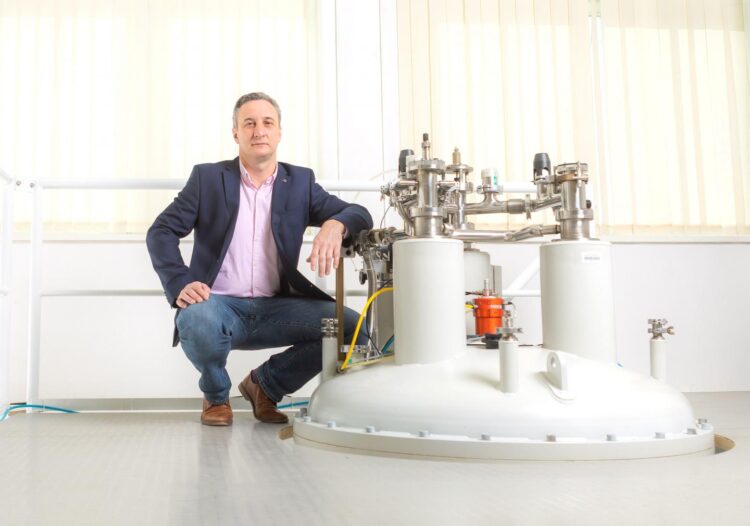Physicists able to determine properties of mesoporous materials more precisely

Credit: Photo: Swen Reichhold, Leipzig University
He and his research group have found a way to more precisely determine the properties of these materials, because they can better account for the underlying disorder. Their article has been designated “ACS Editors’ Choice” by the editors of the American Chemical Society journals, who recognise the “importance to the global scientific community” of the Leipzig researchers’ work and see it as a breakthrough in the accurate description of phase transition phenomena in disordered porous materials.
In mesoporous materials, the pore openings are far smaller than in a normal sponge: their diameters range from 2 to 50 nanometres and are invisible to the naked eye. Nevertheless, they have a number of interesting properties, including with regard to separating substances. This occurs as a function of molecule and pore size, for example.
Until now, scientific experiments have only been able to approximate the desired properties of these materials. “So it is more down to experience whether you can determine which of the structures can be used for which applications,” says the physicist. The problem is that these materials are mostly disordered, which means that pores of different sizes in the material form a complex network structure.
Researchers at Leipzig University developed a model that determines the features that can be observed in such complex pore networks. Professor Valiullin describes the approach as follows: “We can statistically describe how the individual pores in these networks are coupled to each other. We marry disorder with order.” This makes it possible to determine the physical phenomena that need to be understood in gas-liquid and solid-liquid phase transitions, for example. And not only in theory: using special mesoporous modelling, it was possible to prove with the aid of modern nuclear magnetic resonance methods that the theoretical results can also be directly applied in practice.
This should make it easier to use such materials in the future, for example to help release drugs into the human body over an extended period – precisely when necessary and desired. Other potential applications for such materials include sensor technology or energy storage and conversion.
###
Original title of the publication in the American Chemical Society journal Langmuir:
“Impact of Geometrical Disorder on Phase Equilibria of Fluids and Solids Confined in Mesoporous Materials”, doi.org/10.1021/acs.langmuir.0c03047
Jörg Aberger
Media Contact
Prof. Dr. Rustem Valiullin
[email protected]
Original Source
http://www.
Related Journal Article
http://dx.





